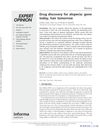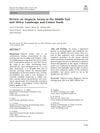TLDR Microneedling is an effective treatment for hair regrowth in Alopecia Areata.
The study, conducted by Wael H. A, Mohamed A. K, Ahmed F. R, and Marwa A. Mohammed, evaluated the effectiveness of microneedling as a treatment for Alopecia Areata (AA), a chronic autoimmune disease affecting hair follicles. The study involved 20 patients aged between 10 and 40 years. The results showed clinical improvement in most cases, with increased hair growth and density within affected areas starting at about one month and completing about three months after treatment. The study concluded that microneedling is a good alternative for treating Alopecia Areata.
 70 citations
,
February 2015 in “Expert Opinion on Drug Discovery”
70 citations
,
February 2015 in “Expert Opinion on Drug Discovery” Topical drugs and near-infrared light therapy show potential for treating alopecia.
 July 2025 in “International Journal of Dermatology Venereology and Leprosy Sciences”
July 2025 in “International Journal of Dermatology Venereology and Leprosy Sciences” Microneedling can effectively promote hair regrowth in alopecia areata.
 December 2023 in “EPRA international journal of multidisciplinary research”
December 2023 in “EPRA international journal of multidisciplinary research” Alopecia areata causes sudden hair loss, has genetic links, and can be managed but not cured.
 1 citations
,
March 2023 in “Clinical, Cosmetic and Investigational Dermatology”
1 citations
,
March 2023 in “Clinical, Cosmetic and Investigational Dermatology” Current treatments for Alopecia Areata have mixed success, and there's a need for better, more accessible options and support for affected individuals.
 June 2023 in “Dermatology and therapy”
June 2023 in “Dermatology and therapy” The Middle East and Africa need better data, treatment consensus, and support for Alopecia Areata.
 August 2025 in “Frontiers in Microbiology”
August 2025 in “Frontiers in Microbiology” Microneedling, especially with halometasone, improves hair regrowth and gut health in alopecia areata.







